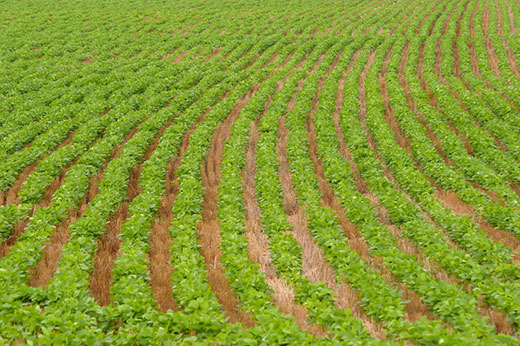
K-State researchers have tested crop rotations using field peas followed by wheat and soybeans (pictured) and have discovered there's more nitrogen left in the soil when field peas are part of the rotation.
K-State researchers test field peas in crop rotations
Studies indicate peas contribute nitrogen to soil
April 22, 2022
By Shelby Varner, K-State Research and Extension news service
MANHATTAN, Kan. – Kansas State University researchers are reporting findings indicating that adding a legume -- such as field peas – to a grass-heavy crop rotation seems to be a good option for fixing nitrogen levels in the field.
Cropping systems agronomist Kraig Roozeboom and graduate researcher Sarah Zerger have been conducting trials in Colby, Hays, Scandia and Manhattan.
“We have data to show that the wheat after peas was actually looking better than after the soybeans at the eastern locations,” Roozeboom said.
Zerger added that “we had more residual soil nitrogen at wheat planting” after a crop of field peas. “By finding that there's more nitrogen in the soil, we can apply less fertilizer to both our wheat and potentially our corn,” she said.
The researchers said they applied about half of the nitrogen they applied the previous year.
“Peas are adding nitrogen to the soil and it’s still there after two years,” Zerger said.
Adding field peas to the rotation also diversifies the market for producers, they said.
Roozeboom said a majority of the crop rotations that have used field peas have been in northwest Kansas, but the researchers aim to “continue pushing the boundaries to see how far east we can go.”
“It's a lot different than soybeans,” Zerger said. “We don't have as many options for herbicide resistance traits with field peas, so we have to look at different options going back to the kind of traditional herbicides that we used to use in non-herbicide resistant soybeans.”
Roozeboom adds: “I'm not saying we're going to replace many, if any, soybean acres in northcentral and northeast Kansas, but it is a proof of concept.”

